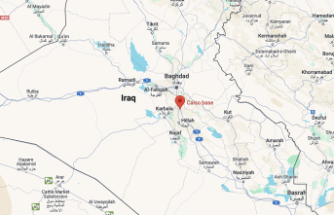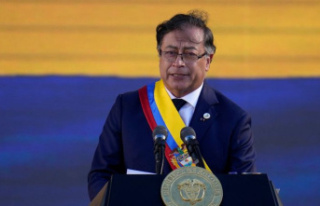In the summer of 626, at least the people of Constantinople were convinced that the end of the world was imminent. According to chroniclers, "savage peoples whose life is war" grew up before their walls, led by the "son of darkness", the Khagan of the Avars. A few days later, a Persian army appeared on the east bank of the Bosphorus and made common cause with the besiegers. And the emperor Heraclius was far away in Armenia with his army. Only God and the Virgin Mary were left to save the Eastern Roman Empire.
However, it was a human being who pulled the strings behind all the troubles: Khosrau II Parvez (ca. 570–628), the Persian great king from the Sasanian dynasty, had the assassination of the Eastern Roman emperor Mauricio in 603 – who once supported him against a usurper and on the throne - taken by the usurper Phocas as an opportunity to add another to the almost endless list of wars between the two great powers. This time it was all or nothing, and Khosrau initially had the much better cards.
Because under the regime of Phocas, Ostrom (Byzantium) got into a serious crisis. The defenses on the Danube border collapsed, allowing Slavic tribes to conquer imperial territory. They came under the rule of the Avars. In the 6th century, this nomadic people from Asia had conquered a large empire from Hungary that stretched as far as the Balkans and which Constantinople was only able to resist with considerable tribute payments. In addition, Byzantium still suffered from the consequences of the great plague pandemic, religious disputes and uprisings. This did not change much when Heraclius, the son of the governor of Carthage, overthrew Phocas in 610 and ascended the throne.
For the Khosrau offensive had great success. In 611 his armies conquered Kaisareia in Anatolia, in 614 they won Jerusalem, 615 Antioch and reached Chalcedon vis-à-vis Constantinople. Finally, in 618/19, the invasion of Egypt succeeded, whose grain exports were lost to Byzantium. "God, help the Romans" became the ubiquitous prayer.
But unlike in later times, when the dispute over the right religion harmed Byzantium more than external enemies, the threat welded the empire together. The church opened its treasury. For 200,000 gold coins, the emperor bought a truce with the Avars and in 622 went into battle with his army against the Persians. Gradually, Herakleios succeeded in putting Khosrau on the defensive. Four years later, the Byzantines had occupied large parts of Armenia and were preparing to advance into Mesopotamia with the Sasanian capital of Ctesiphon (today in Baghdad territory).
Khosrau's countermeasures show the dimensions of politics at the time. Two armies were to advance behind the Byzantines and capture Constantinople. For this, an alliance with the Avars was concluded. This is supported by the fact that both armies reached the Bosphorus at the end of July 626 at the same time. However, they had little time there. The up to 80,000 fighters of the Avar Khagan - the sources do not name any names - could only be supplied for a short time. And the Persians had to assume that Heraclius would rush to save his capital.
However, he didn't. Because that would have meant giving up his strategically favorable position. Instead, he left the defense of Constantinople to his son Constantine and the patriarch Sergios, who ignited a crusading fanaticism in the city. The great land wall completed by Theodosius II in the 5th century and the war galleys of the imperial fleet took care of the rest.
The khagan, concerned less with conquest than with the gratification of his people through plentiful looting, turned to bargaining. He had three Persian ambassadors brought across the Bosphorus and presented his terms with them to a Byzantine embassy. She refused, trusting in divine assistance.
By chance the defenders managed to get hold of the three Persians on their way back. The following symbolic politics shows what stage the conflict had reached in the meantime. One envoy was immediately beheaded, another at sea in the face of the Persian army, the third had his hands chopped off, hung around his neck, and sent to the Persian camp with a colleague's head under his arm. An understanding was no longer possible.
On August 3, the Persian general Shahrbaraz wanted to get his people across the strait with the help of thousands of Slavic dugouts in order to let them take part in the storming of the walls. But the Byzantine fleet was on guard and massacred the boats. Although even Slavic women took part in the fighting, the sea water is said to have turned red from the blood of their fellow tribesmen who had been killed. According to the chronicle of Theodoros Synkellos, corpses and empty boats were floating everywhere.
Since the attacks on land were also unsuccessful, the Khagan had to give the order to withdraw. As a result, many Slavs managed to evade his faltering rule. On August 8, 626, the last horsemen cleared the area around Constantinople. “The Persians remained in their positions for a few more days, then they too withdrew; they had been unable to do anything – helpless spectators watching the Byzantine triumph,” writes the historian Mischa Meier.
The unexpected victory became a turning point. The Byzantines attributed it to the divine assistance, above all to the Virgin Mary, who strengthened her awareness of being the heart of Orthodox Christianity. Emperor Herkleios resumed his offensive and was able to advance into Mesopotamia two years later. There he inflicted a heavy defeat on Khosrau in front of Ctesiphon, which ended the war. The Great King was assassinated by his own grandees while Heraclius restored Byzantine rule over the Levant. In 630 he brought the kidnapped Holy Cross back to Jerusalem.
Khosrau's defeat not only marked the end of the numerous wars in which the Romans and Sasanids had squandered their strength since the third century, but it also opened the stage for a new power. In the years that followed, the armies of Islam overran the Near and Middle East. In 636, Heraclius had to accept defeat on the Yarmouk and evacuate Syria. 651 lost with Yazdegerd III. the last Sasanid against the Arabs Reich and life. But Byzantium was to continue to exist for another 800 years.
You can also find "World History" on Facebook. We are happy about a like.












